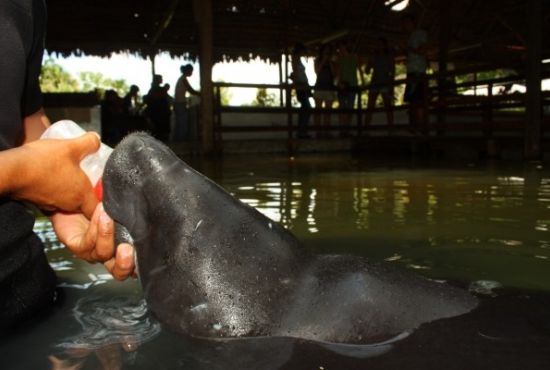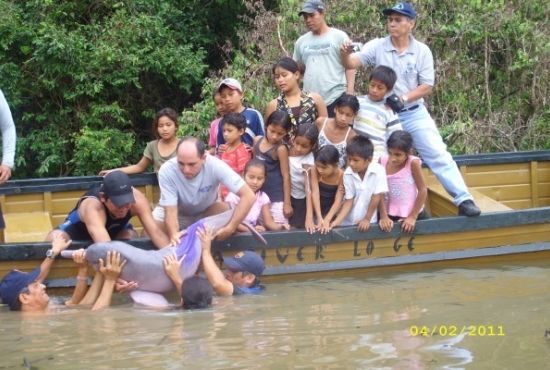Open your heart and help protect the rescued manatees and other jungle animals.
Let us Help them with the “Rescue” of injured or orphaned wildlife, the “Rehabilitation” of those animals during their stay at the center, the successful “Release” and monitoring those animals back to their habitats in the Amazon Rainforest, and with the “Raising Awareness program to children and adults.

The goals of the Amazon Rescue Center are multiple. One of them is to develop the rescuing, rehabilitation and releasing program of the aquatics mammals, and endangered wildlife in Loreto. In order to do so, an educational program on the environment, which is also rising awareness among the tourists and the locals has been created. This program also contributes to the conservation of the Amazonian ecosystem.
Each visit lasts approximately an hour. In addition, during your tour, one of our guide will teach you everything you should know about the rehabilitation process. Process which is vital in order to prepare the animals to be released into the wild.
“The 4 R’s of Recovery”
Our work in the Peruvian Amazon is comprised of four primary functions, which we call “The 4 R’s of Recovery”. The “4 R’s of Recovery” are the “Rescue” of injured or orphaned wildlife, the “Rehabilitation” of those animals during their stay at our center, and the successful “Release” and monitoring those animals back to their habitats in the Amazon Rainforest. The forth “R”, “Raising Awareness”, is perhaps the most critically important aspect of our work, which is educating local adults and children through community outreach, environmental education programs, and ecotourism about the care, condition and conservation status of Amazonian wildlife.
Rescue

Many young manatees are often illegally captured in order to be sold on the markets as pets. Most of them die shortly after their capture due to the fact that they need constant and specific care.
Before the rescuing project was created in 2007, the Acobia-DWA Zoo counted 15 babies manatees who have died in captivity. In order to stop this issue, at the end of the same year the rescuing program is created rescuing and releasing over 40 manatees, among with other species such as: pink dolphins, anteaters, sloths and many more…
Rehabilitation

The rehabilitation process is probably the most important one. The aim is to adapt the specimens to their new diets, and received adapted treatments from the veterinary in order to get a full recovery before being realised.
Release

To this date, we have successfully released 26 manatees, which is a remarkable achievement considering that each and every orphan baby manatee must be hand fed until they are 2 years old. Each of the manatees we have release have been equipped with a radio transmitter so that we can track their seasonal movements and make periodic checkups to monitor their health to see how they are adapting back in the wild. All of our rehabilitated manatees are only released in nature reserves, or protected areas, with the collaboration of the Peruvian government, private organizations and the participation of the local Amazonia children.
Raising Awareness

The environmental educational program has a simple goal. Rising awareness among the local populations concerning the protection of the manatees, and the sustainable use of the natural resources. In order to do so, several strategies and methodologies are used. One of them, is to give the opportunity to thousands of children and teenagers to be in direct contact with the nature so that they learn to love and respect it, and above all generate positive emotions which will push them to act and take actions to preserve the environment.
So far, our actions have benefited to over 80 thousand people in the urban areas and Amazonian Communities.




